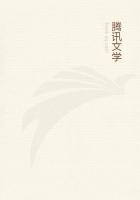All history is liable to repeat itself, and that of aeronautics forms no exception to the rule. The second year after the invention of the balloon the famous M. Blanchard, ascending from Frankfort, landed near Weilburg, and, in commemoration of the event, the flag he bore was deposited among the archives in the ducal palace of that town. Fifty-one years passed by when, outside the same city, a yet more famous balloon effected its landing, and with due ceremony its flag is presently laid beside that of Blanchard in the same ducal palace. The balloon of the "Immortal Three," whose splendid voyage has just been recounted, will ever be known by the title of the Great Nassau Balloon, but the neighbourhood of its landing was that of the town of Weilburg, in the Duchy of Nassau, whither the party betook themselves, and where, during many days, they were entertained with extravagant hospitality and honour until business recalled Mr. Hollond home.
Green had now made upwards of two hundred ascents, and, though he lived to make a thousand, it was impossible that he could ever eclipse this last record. It is true that the same Nassau balloon, under his guidance, made many other most memorable voyages, some of which it will be necessary to dwell on. But, to preserve a better chronology, we must first, without further digression, approach an event which fills a dark page in our annals; and, in so doing, we have to transfer our attention from the balloon itself to its accessory, the parachute.
Twenty-three years before our present date, that is to say in 1814, Mr. Cocking delivered his views as to the proper form of the parachute before the Society of Arts, who, as a mark of approval, awarded him a medal. This parachute, however, having never taken practical shape, and only existing, figuratively speaking, in the clouds, seemed unlikely to find its way there in reality until the success of the Nassau adventure stirred its inventor to strenuous efforts to give it an actual trial.
Thus it came about that he obtained Mr. Green's co-operation in the attempt he now undertook, and, though this ended disastrously, for Mr. Cocking, the great professional aeronaut can in no way soever be blamed for the tragic event.
The date of the trial was in July, 1837. Mr. Cocking's parachute was totally different in principle from that form which, as we have seen, had met with a fair measure of success at the hands of early experimenters; and on the eve of its trial it was strongly denounced and condemned in the London Press by the critic whom we have recently so freely quoted, Mr. Monck Mason.
This able reasoner and aeronaut pointed out that the contrivance about to be tested aimed at obviating two principal drawbacks which the parachute had up to that time presented, namely (1) the length of time which elapses before it becomes sufficiently expanded, and (2) the oscillatory movement which accompanies the descent. In this new endeavour the inventor caused his machine to be fixed rigidly open, and to assume the shape of an inverted cone. In other words, instead of its being like an umbrella opened, it rather resembled an umbrella blown inside out. Taking, then, the shape and dimensions of Mr. Cocking's structure as a basis for mathematical calculation, as also its weight, which for required strength he put at 500 lbs. Mr. Monck Mason estimated that the adventurer and his machine must attain in falling a velocity of some twelve miles an hour. In fact, his positive prediction was that one of two events must inevitably take place. "Either the parachute would come to the ground with a force incompatible with the safety of the individual, or should it be attempted to make it sufficiently light to resist this conclusion, it must give way beneath the forces which will develop in the descent."
This emphatic word of warning was neglected, and the result of the terrible experiment can best be gathered from two principal sources. First, that of a special reporter writing from terra-firma, and, secondly, that of Mr. Green himself, who gives his own observations as made from the balloon in which he took the unfortunate man and his invention into the sky.
The journalist, who first speaks of the enormous concourse that gathered to see the ascent, not only within Vauxhall Gardens, but on every vantage ground without, proceeds to tell of his interview with Mr. Cocking himself, who, when questioned as to the danger involved, remarked that none existed for him, and that the greatest peril, if any, would attend the balloon when suddenly relieved of his weight. The proprietors of the Gardens, as the hour approached, did their best to dissuade the over-confident inventor, offering, themselves, to take the consequences of any public disappointment. This was again without avail, and so, towards 6 p.m., Mr. Green, accompanied by Mr. Spencer, a solicitor of whom this history will have more to tell, entered the balloon, which was then let up about 40 feet that the parachute might be affixed below. A little later, Mr. Cocking, casting aside his heavy coat and tossing off a glass of wine, entered his car and, amid deafening acclamations, with the band playing the National Anthem, the balloon and aeronauts above, and he himself in his parachute swinging below, mounted into the heavens, passing presently, in the gathering dusk, out of view of the Gardens.
The sequel should be gathered from Mr. Green's own narrative.
Previous to starting, 650 lbs. of ballast had to be discarded to gain buoyancy sufficient to raise the massive machine.















